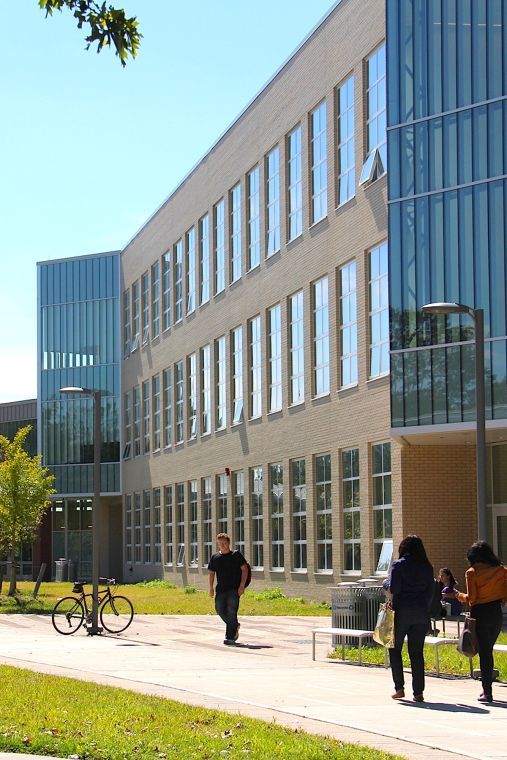A new SUNY Old Westbury building has become the first of its kind in Nassau County to earn LEED gold certification by the United States Green Building Council, according to college officials.
The 147,000 square-foot Academic Building, which opened last year, is the first new academic facility built at the college since 1985, according to a press release. The building is primarily used for classrooms and faculty offices.
“In the 12 months since it opened, the Academic Building has rejuvenated the College’s academic programming while also revitalizing the campus atmosphere for the students who study with us,” SUNY Old Westbury President Calvin O. Butts III said in a statement. “The mission statement of Old Westbury calls on us to stimulate in our students a passion for learning and a commitment to building a more just and sustainable world. Our Gold-certified Academic Building puts us in prime position to succeed on both fronts.”
LEED, which stands for Leadership in Energy & Environmental Design, provides third-party verification of green buildings by determining the environmental impact of new construction projects.
The LEED system offers four levels of certification for new construction, which are determined by the number of credits a project’s design receives based on a series of prerequisites, according to the release. Only platinum outranks gold.
SUNY Old Westbury’s Academic Building maximizes natural light and limits heat gain, according to the release. In addition, the facility uses new heating, ventilating and air conditioning systems, more efficient lighting fixtures and a more effective stormwater infiltration system.
According to the release, approximately 43 percent of the building’s construction materials came from the region and 44.5 percent are from recycled materials.
The building is expected to use 29 percent less energy than conventional buildings, according to the release, and use of its water conservation fixtures are projected to achieve savings of 48 percent.



